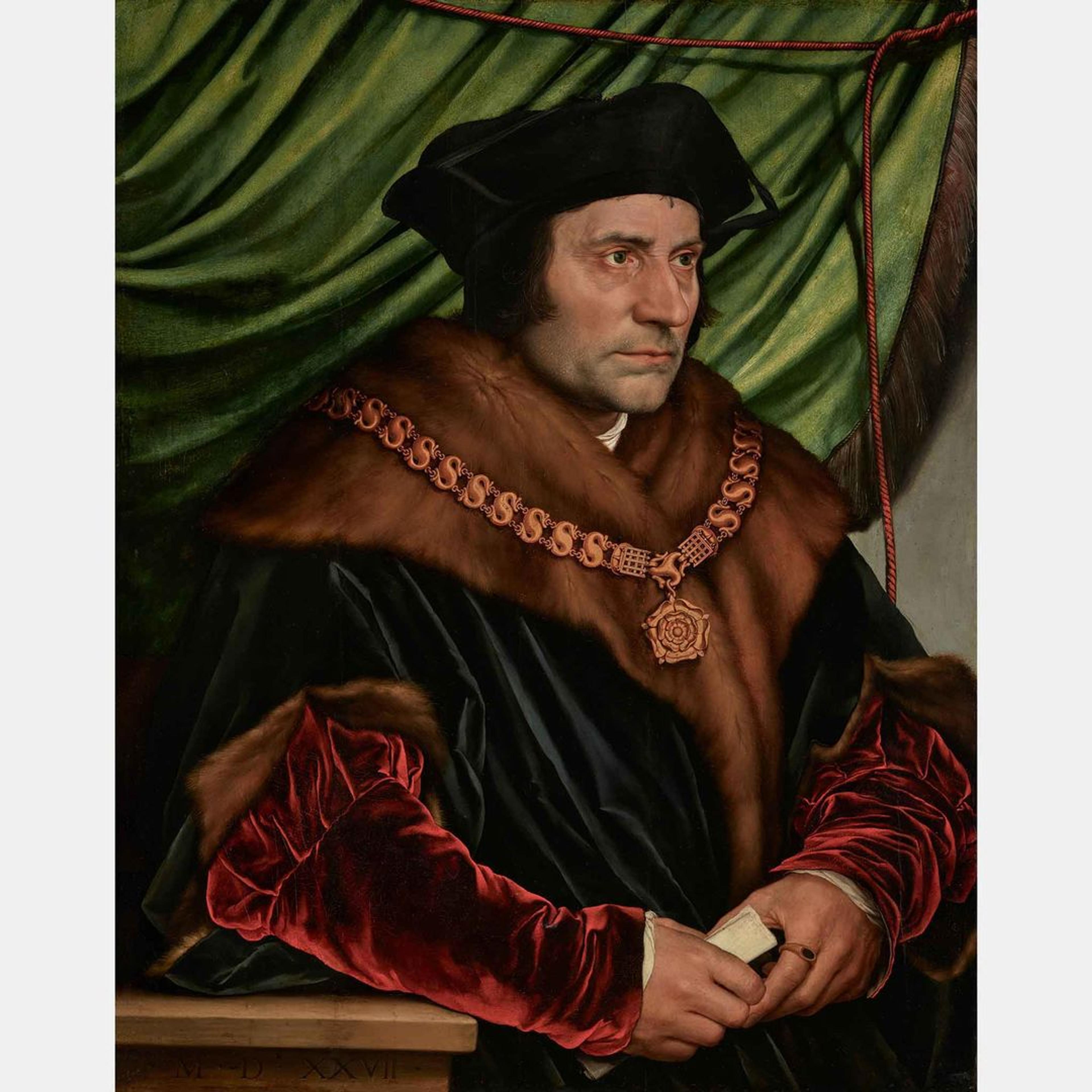语音指南

587. Sir Thomas More, Hans Holbein the Younger, 1527 and Margaret Roper (Margaret More 1504–1544), Hans Holbein the Younger, 1535–1536
NARRATOR:
This portrait marks the close association of two of the great cultural figures of the Tudor period: the politician and thinker Sir Thomas More and the painter Hans Holbein. More was an important patron of Holbein’s, who knew him and his family well.
Thomas More is known to us today as the author of Utopia and a saint in the Roman Catholic Church. But here, Holbein emphasizes his political role. Adam Eaker.
ADAM EAKER:
He’s wearing what’s known as a livery chain. This marks his service to the court, his work as the Chancellor of the Duchy of Lancaster. And he is not portrayed with his books, with signs of his learning, but really as a high-level bureaucrat, the equivalent of something like Henry VIII’s prime minister. And at the same time, this is a portrait, maybe more than any other, that shows Holbein’s incredible ability to give us a sense, however fictional it may be, of an inner life.
One of the details that is so stunning in this portrait is the salt and pepper stubble shadowing Moore’s cheek. It conveys such a sense of a man who maybe hasn’t had time to shave because he has so many duties to carry out for the king.
NARRATOR:
The portrait advertises More’s identity as a court servant. But in this era, portraits could also serve more private functions.
For example, in the alcove at left, is the miniature portrait of Thomas More’s daughter, Margaret Roper. This was the era when the miniature portrait was conceived: tiny, intimate works that could be held in the hand or worn on the body. Holbein painted Margaret the same year that her father was beheaded by Henry VIII. Margaret Roper was known across Europe for her humanist education.
ADAM EAKER:
She actually has her finger stuck in a book as though she’s trying to keep her place in her reading while she sits for her portrait. It’s a very powerful and moving image of this strong female intellectual from 16th-century England.
###